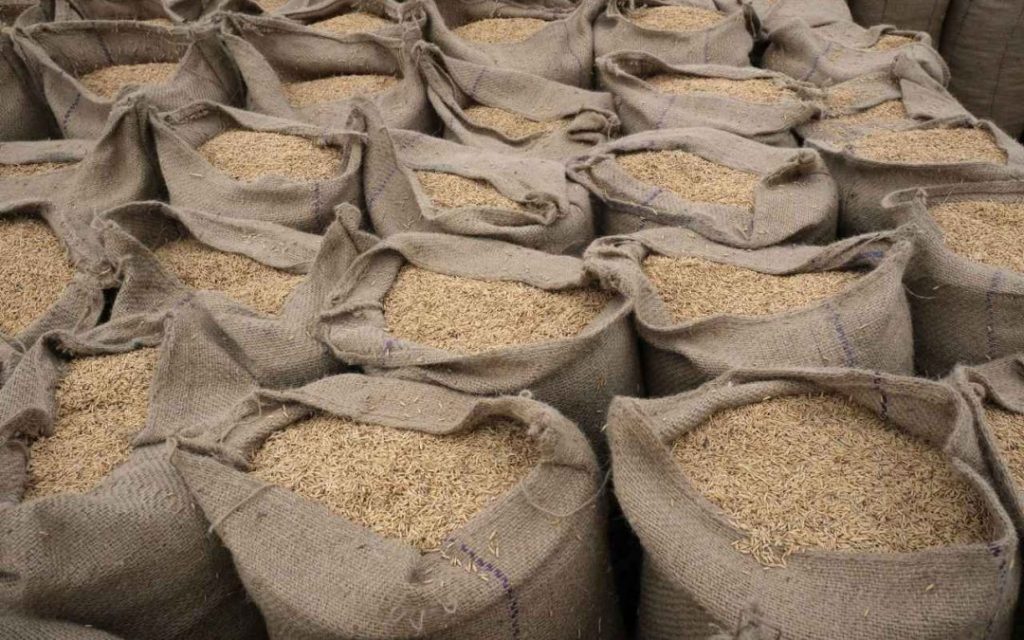Tags
Rice Prices Plummet as India Eases Export Restrictions
by Trade Brains

In a significant shift in the global rice market, prices have experienced their sharpest decline in 16 years following India’s decision to relax export curbs. This move has sent ripples through the international rice trade, affecting both exporters and importers alike.
India Loosens Export Controls
The Indian government on September 28 announced the removal of most export restrictions on rice shipments, a policy implemented in 2023. This change allows for the export of non-basmati white rice and reduces the export duty on parboiled rice from 20% to 10%.
These adjustments come in the wake of recent national elections and are supported by favorable agricultural forecasts. Experts anticipate above-average monsoon rains, which could lead to increased crop yields. Additionally, India’s state granaries currently hold substantial rice stocks, creating a need to manage surplus inventory.
India’s role in the global rice trade is substantial. In 2022, the country accounted for over 40% of worldwide rice exports, surpassing the combined shipments of the next four largest exporters. This dominance underscores the significant impact of India’s policy decisions on the global market.
The country exports rice to more than 140 countries, with top buyers of non-basmati rice including Benin, Bangladesh, Angola, Cameroon, Djibouti, Guinea, Ivory Coast, Kenya, and Nepal. Premium basmati rice from India is primarily purchased by Iran, Iraq, and Saudi Arabia.
Immediate Market Reactions
The impact of India’s policy change was swift and significant. Thai white rice 5% broken, a key Asian benchmark, saw an 11% price drop, reaching $509 per ton. This marks the largest decline since May 2008 and extends a downward trend to a 15-month low.
Indian rice prices have also decreased notably. The 5% broken parboiled variety now trades at $498 per ton, its lowest since November 2023. The 5% broken white rice variety is currently offered between $490-$495 per ton. These price drops reflect the sudden increase in global rice supply. Other major exporters have felt the effects as well. Vietnamese 5% broken rice prices have fallen to $552 per ton, their lowest in over a year.
International traders and importers are responding cautiously to these market changes. Many are delaying purchases, waiting for the market to stabilise before making significant moves. India’s decision suddenly increased supplies. It is giving buyers a breather to slow down and rethink the whole demand and supply situation.
BV Krishna Rao, president of the Rice Exporters Association, commented, “Prices have dropped a lot thanks to the duty cut, but buyers are still holding off, waiting for things to calm down in the market.”
Implications for Food Security
The easing of export restrictions by India could have notable implications for global food security. Rice-importing nations, particularly in Southeast Asia and Africa, may benefit from increased supply and potentially lower prices.
Rice plays a crucial role in global nutrition, contributing significantly to calorie intake in many regions. In parts of Southeast Asia and Africa, rice can account for up to 60% of total calorie intake. Increased availability could impact food security in these areas, potentially easing the financial burden on consumers and improving overall food accessibility.
However, it’s worth noting that while rice prices are decreasing, costs for other staple foods are rising due to various factors, including extreme weather events. This creates a complex scenario for global food security, as the benefits of lower rice prices may be offset by increases in other food costs.
Projections for global rice supply and demand suggest a more balanced outlook. India’s increased exports could help stabilise prices and ensure steady supply to meet global demand. This could be particularly beneficial for countries like Indonesia and Senegal, which rely heavily on rice imports.
Responses from Other Rice-Producing Countries
Other major rice-producing countries are adapting to this new market dynamic. Thailand is dealing with sudden price drops and currency fluctuations. Thai exporters may need to adjust their pricing strategies to remain competitive. Thai 5% broken rice has tumbled to $515 per ton from $560 a week ago, its lowest since June 2023.
As buyers waited for exporters to lower prices after India lifted its export ban. However, domestic prices in Thailand remain stable, with strong supply expected due to good water levels. Vietnam faces challenges in reaching its export targets due to increased competition.
The country may need to reassess its pricing and marketing strategies to maintain its market position. Other significant exporters like Pakistan and the United States may also need to adjust their export strategies. This could involve focusing on quality differentiation or exploring new markets to maintain their market share.
These countries might consider policy adjustments to support their rice industries. Potential measures could include farmer subsidies, investment in agricultural technology, or new trade agreements to secure export markets.
The sudden surge in demand for rice from these countries amid limited surpluses had previously sent export prices to their highest levels in more than 15 years. The new market dynamics created by India’s policy change will likely lead to a period of adjustment as these countries seek to maintain their competitive edge.
Looking Ahead
As the global rice market adapts to these changes, further adjustments are likely. Countries will continue to refine their strategies, and markets will seek a new equilibrium. This situation underscores the interconnected nature of global food systems and the far-reaching impact of policy decisions on international trade.
The coming months will be crucial in determining the long-term effects of India’s policy change. India’s decision to ease rice export restrictions has triggered a significant shift in the global rice market. While it presents challenges for competing exporters, it offers potential benefits for importing nations and could contribute to improved food security in some regions. As the situation unfolds, stakeholders across the global rice trade will need to remain adaptable and responsive to these evolving market conditions.
https://tradebrains.in/rice-prices-plummet-as-india-eases-export-restrictions/Written By Fazal Ul Vahab
Published Date: October 14, 2024






